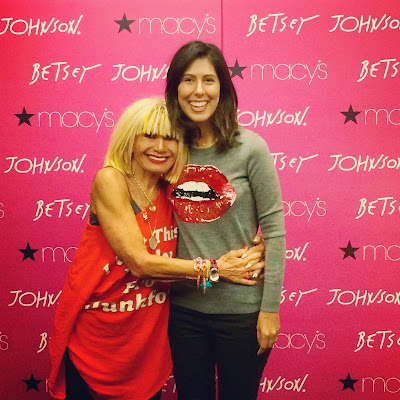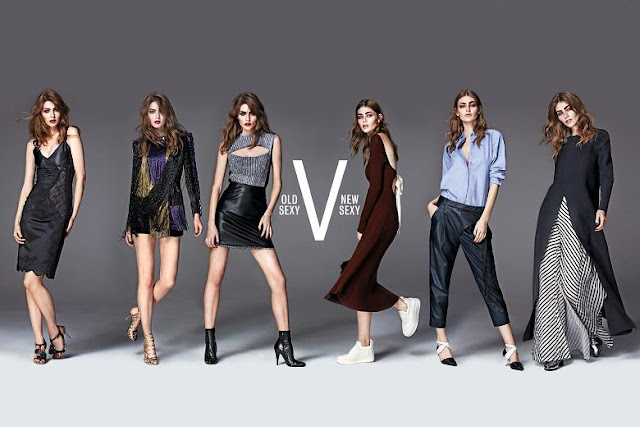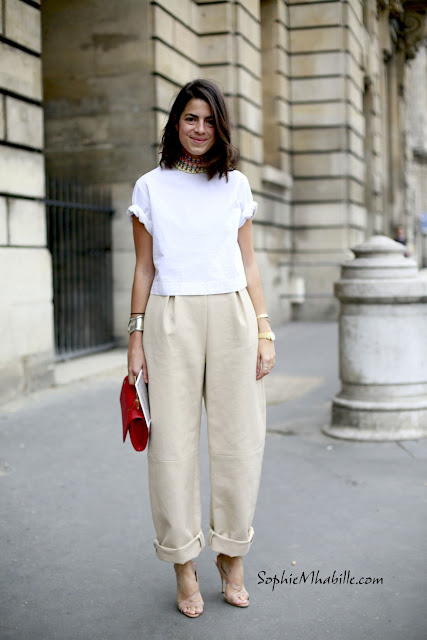What’s sexy today isn’t what was sexy before, well as least according to Anna Murphy. In an article for The Sunday Times Murphy asks “What’s Sexy Now?”
“There always used to be an agreement of sorts on what sexy was, fashion-wise at least. Sexy was tight and short, or tight and low-cut; better still, it was both. It was skirts, not trousers; heels, not flats. Sexy was what men liked, and given that until a couple of generations ago most women’s future, their financial security, depended on them being what men liked, sexy was what every sensible woman liked, too. Of course, you wanted to look the right kind of sexy, the marrying kind of sexy – nothing too tight or too short or too low-cut.
Now women can dress for whomever they please – even, shock, for themselves – and there is no such thing as too tight or too short. We believe in a world in which fame and fortune can be built on a big bottom in a small dress. Many women, whatever the stature of their derriere, attire themselves accordingly, at least when they are out to impress.
Bodycon didn’t used to be a term that tripped off the tongue, or out of the store. Now – as anyone brave enough to venture onto Britian’s high streets after closing time on a Saturday night will know – bodycon is a way of life. Pretty much anything, it seems goes.
Yet though some of the fashion world, and most of the real world, has long been in love or rather lust, with S.E.X.Y, the majority of the fashion world isn’t, or least, wasn’t. This season, however, that’s changed. But let’s be clear: it’s the so-called ‘new’ sexy that the front row is getting excited about, not the kind of clobber that would be worn by Liz Hurley.
There is, of course, mothering fashion likes better than to shove a ‘new’ in front of something old to pass off something that is unchanged. But in this instance the new is different from the old. New sexy is floaty, droopy, long, a tad boho, a bit louche.
It’s definitely a fresh fashion mood. Most women in the industry do not dress like Kim Kardashian. Nothing clings. They never show cleavage or thigh. To the untrained eye it’s not just that these women’s clothes aren’t slinky, it’s that they don’t’ even fit. Sometimes a front-rower may appear to have accidentally put on something of her husband’s, or shouldered a chair cover before she left the house.
I think these women look amazing. They think they look amazing. These are women who have always dressed for themselves, and for each other, rather than for men.
The most high-profile example is New Yorker Leandra Medine, who even calls her blog Man Repeller. ‘Good fashion is about pleasing women, not men,’ she has said. ‘The trends that we love, men hate. And that is fantastic.’ (oh, the bizarre backlash when she married at 24.)
This season, however, even the most diehard man repellers are falling for sexy in its newest, least – well – sexy incarnation. Take Rebecca Lowthorpe, assistant editor at Elle: normally a lover of cutting-edge trousers shapes, she’s never concerned herself with sexy Now she does, with qualification. ‘I don’t want to look like the cliché of a sexy woman circa 1984. What is sexy now is to look as if you haven’t bothered. We are all too busy to wear a bandage dress with heels and stockings. That’s why labels such as Céline and Chloé – both designed by busy women – are so appealing.’
If there is any flash on show at all in the new sexy it is a soupcon, idiosyncratically placed. But it’s there, it’s undeniably there. And if you can’t work out quite how any of this could be classified as sexy, well, the fashion crowd don’t care. They know who looks hot and who not with out the semaphore of someone’s cleavage.
Céline is the lodestar of the new sexy. Ms Céline has always looked hip, intelligent. She still does, but now there is also a new kind of sultry added to the mix. New-season Céline even reveals some – shock – flesh. There are jackets that unbutton at the shoulder, skirts and dresses with carefully placed holes in them. When I spoke to Céline’s designer, Pheobe Philo, after her show she told me, ‘I wanted to explore the fine line between sexuality and sensuality. I find glamour quite complex. When is it sexualized, when is it not?’
That Philo can bring herself to utter the word ‘sexuality’ shows the extent to which the new sexy has arrived. That she can refer to the notion of glamour, long considered a little too Strictly Come Dancing (known in the US as Dancing with the Stars) by many in the fashion world, shows how seduction is suddenly cool.
Céline and Chloé sell. Yet the financial power of straight-down-the-line sexiness is vast. The profits at the brands that do sexy luxury – sexury? – go up and up. Balmain, for example, has doubled its profits every year since 2011, when Olivier Rousteing took over. Rousteing hangs out with a Balmain Army of the similarly young, gorgeous and bodycon-addicted – Rihanna, Kendall and other first-namers – all over social media. ‘Sexy is about attitude, about a way of life,’ Rousteing tells me. ‘It’s about not being scared and taking risks.’ It is also, where Rousteing is concerned, about knicker-grazing shirts and see-through everything; it is look-at-me incredibleness.

According to Judd Crane, the director of womensear at Selfridges, ‘The Balmain uniform plays with traditional ideas of sexy, but is undeniably of the moment.’ Crane acknowledges the rise of a ‘softer, less obvious sexy’, but sees the alternative universe of the Balmain client as similarly distinct from the miniskirt wearer of old.
‘For the women who are buying into Balmian,’ says Crane, ‘or the variants of sexy at labels such as Versace and Saint Laurent, sexy is about female appreciation. It’s not about the make gaze. It’s about power and empowerment. Blamain customers aren’t thinking about looking sexy, but about being brave and adventurous with fashion.’
Hang on a minute. This is getting confusing. So even the old sexy can be new, too? So flashing your flesh and flagging up your curves isn’t about seeking out the objectification of the male gaze, but making yourself the subject of whatever you please, even if it’s only your latest selfie?
I need help, so I call up Juliette Dexter, parther at PR company The Communicaitons Store, a woman who is definitely subject, not object, and who is a long-time advocate of the power of cling. ‘Iused to wear a suit and try to look a like a man,’ Dexter says. “but I don’t feel I need to do that any more. I want to wear clothes that accentuate my femininity. Wearing a fitted dress by Roalnd Mouret that enhances my curves makes me feel strong. Dressing this way is empowering.’ The e-word again.
And then there’s Sophia Neophitou-Apostulou, editor of 10 Magazine. She is one of British fashion’s most high-profile figures, and perhaps the only one on our front row to understand the might of a great pencil skirt and an epic décolletage. ‘What is sexy? Sexy is a weird invisible formula. It is more about what you exude than what you wear.’
Neophitou-Apostulou wears figure-hugging Azzedine Alaïa and Antonio Berarid – ‘because they accentuate the bits of my body I feel good about’. But she sees seductiveness in the softer, androgynous approach, too, and praises Céline for having ‘made an A-line floor-length gown sexy’. Sexy, she continues, ‘is about the self-confidence of a woman. It’s a cliché but it’s true. She might be wearing a sack or that Céline dress. All these looks can be sexy. On the other hand, someone can try to drss in a more traditionally sexy way and it can go horribly wrong if she doesn’t belong in those clothes. You have to own what you wear.’
Mmmm. so there’s the new sexy, and the new old sexy. Just the kind of opacity that - as long as the customer buys into one or other version for the new season - makes the fashion world happy. Still, it’s good news for us, too: we can choose. As Lowthorpe observes, “isn’t feeling sexy about feeling the best version of yourself?’ At last.”
As someone who doesn't wear bodycon dresses, short skirts, plunging necklines or super high heels I personally LOVE this 'new sexy'. Let's hope the makes it way to Chicago!





































